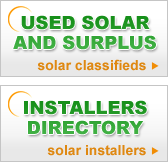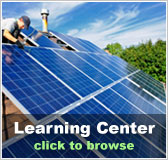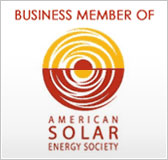Delaware is fast becoming one of the leading states in Solar and Alternative
Energy users and producers in the United States. Even though there are
other states that usually get more sun, Delaware’s earth first
consciousness, and the willing to be proactive rather than reactive
has set the state apart from it contemporaries.
One of Delaware’s biggest supporters of going solar is none other
than the great Senator Ruth Ann Minner. Another leading proponent of
the state’s solar plans is the wonderful organization the Delaware
Department of Natural Resources and Environmental Control. These tireless
workers have put a lot into the process of reducing our carbon footprint,
and trying to make the state more solar friendly for both commercial
companies as well as private individuals.
Having great minds like this supporting Solar Power expansion and growth
will undoubtedly help lead Delaware’s Solar potential. With items
like a Solar Kit and Solar and Photovoltaic Panels helping lead the
way for a variety of commercial companies and private residents to alternative
energy sources.
Solar electricity stored in batteries can be tapped if the grid fails,
or used during periods when utility rates are most expensive. Which
means that any extra energy is tied back into the power grid and result
in cheaper costs for everyone. It is very difficult for anyone to store
this electricity effectively so it is only logical that it would be
better to use it.
Governor Minner required several state agencies to develop energy efficiency
plans and allow governments and school districts to aggregate their
energy consumption in order to pursue better terms on contracts with
energy suppliers. The order requires all state agencies to pursue energy
performance contracts in order to reduce energy consumption.
Having a person with this much political clout pulling for alternative
energy is one of the greatest strengths Delaware has going for them.
Switching to Solar Power not only helps the environment, it also helps
save you money. Solar energy refers primarily to the use of solar radiation
for practical ends. All other renewable energies other than geothermal
derive their energy from the sun.
Solar technologies are broadly characterized as either passive or active
depending on the way they capture, convert and distribute sunlight.
Active solar techniques use photovoltaic panels, pumps, and fans to
convert sunlight into useful outputs.
Passive solar techniques include selecting materials with favorable
thermal properties, designing spaces that naturally circulate air, and
referencing the position of a building to the Sun. Active solar technologies
increase the supply of energy and are considered supply side technologies,
while passive solar technologies reduce the need for alternate resources
and are generally considered demand side technologies.
Sunlight can be converted into electricity using photovoltaic’s
(PV), concentrating solar power, and various experimental technologies.
PV has mainly been used to power small and medium-sized applications,
from the calculator powered by a single solar cell to off-grid homes
powered by a photovoltaic array.
As an intermittent power source, solar power requires a backup supply,
which can partially be complemented with wind power. Local backup usually
is done with batteries, while utilities normally use pumped-hydro storage.








